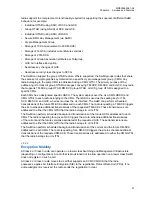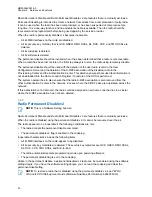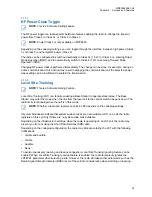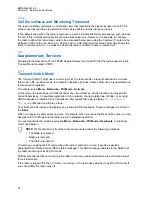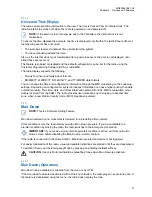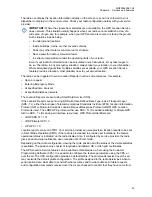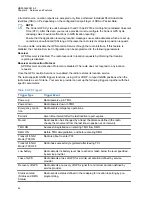
2.10
Mobility Services
Terminal mobility is the ability of terminals to acquire, register, and operate on an appropriate TETRA
network. If required, terminals can change cells with minimum interruption to services.
2.10.1
Main Control Channel Frequencies
The radio can find a wide range of main control channels. The radio maintains stored lists of carrier
frequencies which are scanned in order.
1
A list of discrete entries of the last 32 control channels used by the radio.
2
A static list of up to 32 discrete frequencies specified by the operator that can be preprovisioned.
The system operator can modify this list using the programming tool.
3
A frequency range specification, using a specific offset, that can be preprogrammed in the factory.
The system operator can modify this range using the programming tool. Then the radio scans all
frequencies in 25 kHz intervals in the specified range.
4
An extra frequency range specification. Having two separate range specifications allows for two
non-contiguous blocks of frequencies or two different offsets.
The radio can use all four frequency lists to speed up registration process after a power cycle or loss of
Trunked Mode Operation (TMO) coverage.
2.10.2
Channel Selection
Each TDMA frame on a given carrier comprises of four time slots, which any slot can be used as a
physical channel.
The following types of physical channels are available:
• Traffic physical (TP) channel - used primarily for circuit call traffic.
• Control physical (CP) channel - dedicated only for signaling.
• Unallocated physical (UP) channel.
The following types of control channels are available:
• Main Control Channel (MCCH) - occupies the first slot of the main carrier.
• Secondary Control Channel (SCCH) - can be used to extend Control Channel capacity.
NOTE:
This is a Software Selling Feature.
The following types of SCCH are available:
• Common SCCH
• Assigned SCCH
In addition to the MCCH, a cell can have up to three common SCCHs, which could occupy slots 2, 3,
and 4 in the main carrier. This solution allows the radio to distribute its population among up to four
channels and so to increase Control Channel capacity at the expense of traffic channel capacity.
Until having received a specific parameter on a cell, the radio uses the MCCH. When the signal is
received, each radio maps itself to a particular common SCCH, and that SCCH operates as the MCCH
for the radio.
MN003465A01-AF
Chapter 2 : Services and Features
32










